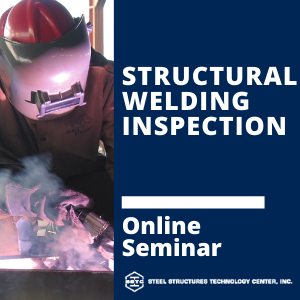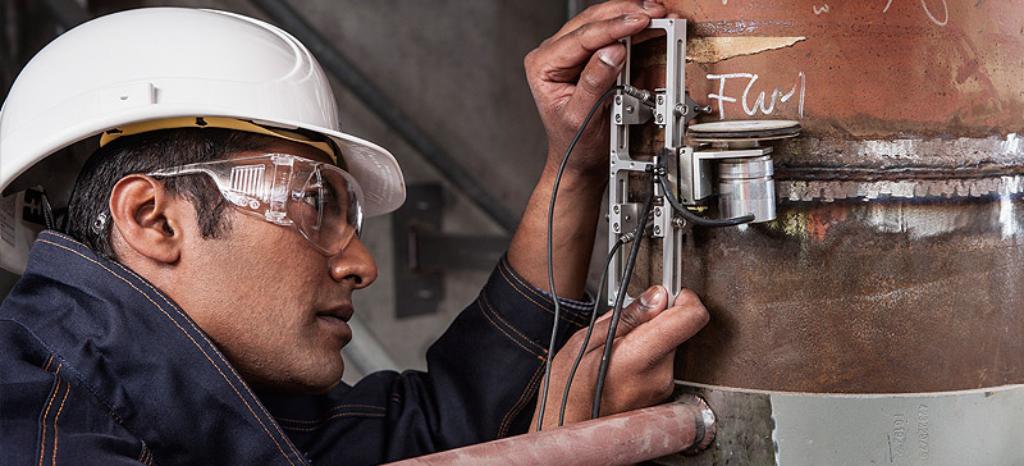How Welding Inspection Gilbert Arizona Can Improve Your Building And Construction and Manufacturing Processes
How Welding Inspection Gilbert Arizona Can Improve Your Building And Construction and Manufacturing Processes
Blog Article
Checking Out the Importance of Welding Assessment in Industrial Applications: Securing Versus Failures and Enhancing Durability
Welding inspection functions as a vital line of defense in industrial applications, guaranteeing the architectural honesty and integrity of welded elements. By methodically determining issues such as porosity and insufficient combination, inspections not only prevent failures however also extend the life-span of important properties. Complying with industry criteria boosts both safety and security and operational performance; nonetheless, the implications of overlooking these practices can be extreme. As we check out the multifaceted advantages of regular inspections, it ends up being evident that recognizing these dynamics is not merely an issue of compliance but a strategic crucial for durability and danger mitigation (Welding Inspection Gilbert Arizona).
Duty of Welding Inspection
Welding inspection functions as a critical protect in industrial applications, ensuring that bonded structures fulfill defined criteria of quality and safety. This procedure entails a methodical assessment of welds to validate their integrity, toughness, and compliance with well-known codes and specifications. The function of welding inspection is complex, incorporating both visual assessments and non-destructive screening techniques, which may consist of ultrasonic, radiographic, or magnetic bit testing.

Additionally, welding assessment plays an essential role in regulative conformity. Ultimately, the function of welding examination is vital in promoting security, enhancing performance, and shielding investments in commercial infrastructure.
Common Welding Defects

One of the most prevalent problems is porosity, characterized by tiny gas pockets entraped within the weld steel. This happens as a result of pollutants or inappropriate protecting gas, compromising the weld's stamina. One more substantial defect is incomplete combination, where the weld steel falls short to bond correctly with the base product, possibly bring about structural weak points.
Cracks can likewise establish throughout or after the welding procedure, often attributed to thermal tensions or improper air conditioning prices. In addition, damaging, where the base steel is deteriorated along the weld grain, can compromise the joint and is usually triggered by excessive heat input or inaccurate strategy.
Moreover, absence of penetration occurs when the weld steel does not get to the root of the joint, leading to poor toughness. Understanding these common issues is important for welders and assessors alike to ensure that bonded structures satisfy safety and security and performance standards, inevitably preventing potential failures in industrial applications.
Advantages of Normal Evaluations
Normal examinations act as a crucial protect in guaranteeing the integrity and durability of bonded structures. These examinations identify prospective issues and weak points that might endanger the honesty of welds, allowing for prompt removal before issues rise. By applying an organized assessment routine, organizations can dramatically lower the danger of disastrous failings that might lead to costly downtime, equipment replacement, and even mishaps.
In addition, normal examinations contribute to improved high quality control throughout the welding procedure. By sticking to a constant assessment timetable, firms can ensure that their welding practices fulfill recognized top quality standards and finest methods. This not only promotes a culture of responsibility but also encourages continuous renovation amongst welding employees.
In addition, routine examinations facilitate better upkeep planning. By identifying wear and tear early, organizations can tactically set up replacements and repair work, reducing interruption to operations. This proactive technique ultimately brings about extensive asset life-span and enhanced overall performance.
Finally, a dedication to normal examinations can improve a firm's track record in the industry. Stakeholders and clients significantly value companies that prioritize security and top quality, consequently enhancing trust fund and potentially leading to raised service chances.
Industry Requirements and Laws
Adhering to sector criteria and policies is a fundamental aspect of welding assessment that matches the benefits of normal assessments. These criteria, developed by organizations such as the American Welding Culture (AWS) and the American Society of Mechanical Engineers (ASME), supply a framework for best techniques in welding processes, products, and examination methods. Compliance with these laws makes sure that welds satisfy the required top quality and safety and security criteria, considerably decreasing the threat of architectural failures.
Governing bodies like the Occupational Security and Health And Wellness Administration (OSHA) additionally impose standards that secure Resources workers and the environment during welding procedures. By following these developed criteria, industries can improve the dependability of their structures and elements, guaranteeing they execute as intended under numerous operational conditions.
Additionally, adherence to sector requirements fosters uniformity in quality control, assisting in smoother interaction among stakeholders and regulative firms. This alignment not only reduces obligation dangers yet additionally enhances the credibility of organizations in open markets. Eventually, conformity with welding criteria and laws is not merely a lawful obligation; it is a crucial investment in safety and security, efficiency, and lasting operational success.
Future Trends in Welding Examination
As markets remain to progress, the future of welding examination is positioned to integrate advanced technologies that enhance accuracy and efficiency. One of the most substantial patterns is the adoption of automation and robotics in inspection procedures. Automated systems can conduct examinations quickly, decreasing human mistake and enhancing throughput in manufacturing atmospheres.
Furthermore, the assimilation of man-made intelligence (AI) and equipment understanding formulas will make it possible for anticipating analytics, enabling real-time assessments and aggressive upkeep (Welding Inspection Gilbert Arizona). By assessing information from previous inspections, these modern technologies can determine patterns that could suggest potential failings, consequently extending the life-span of welded parts

Moreover, the trend in the look these up direction of digitalization will bring about improved information administration systems that assist in better monitoring, reporting, and compliance with market standards. In summary, the future of welding assessment is defined by technical advancements that guarantee to substantially enhance dependability, safety, and operational efficiency in various commercial applications.
Final Thought
In verdict, welding assessment have a peek at this site serves a vital feature in making certain the stability and longevity of bonded structures across numerous industrial applications. As developments in innovation continue to evolve, the future of welding examination assures raised precision and performance, eventually contributing to the durability of vital facilities.
Welding examination offers as a critical line of protection in commercial applications, ensuring the structural stability and dependability of welded parts.Welding assessment offers as an essential safeguard in commercial applications, making certain that bonded frameworks fulfill specified criteria of high quality and safety - Welding Inspection Gilbert Arizona. Eventually, the role of welding assessment is important in promoting security, improving performance, and shielding investments in commercial facilities
These requirements, developed by organizations such as the American Welding Society (AWS) and the American Culture of Mechanical Engineers (ASME), provide a structure for finest practices in welding procedures, materials, and inspection techniques.In conclusion, welding inspection offers an important feature in ensuring the integrity and toughness of bonded structures across various industrial applications.
Report this page